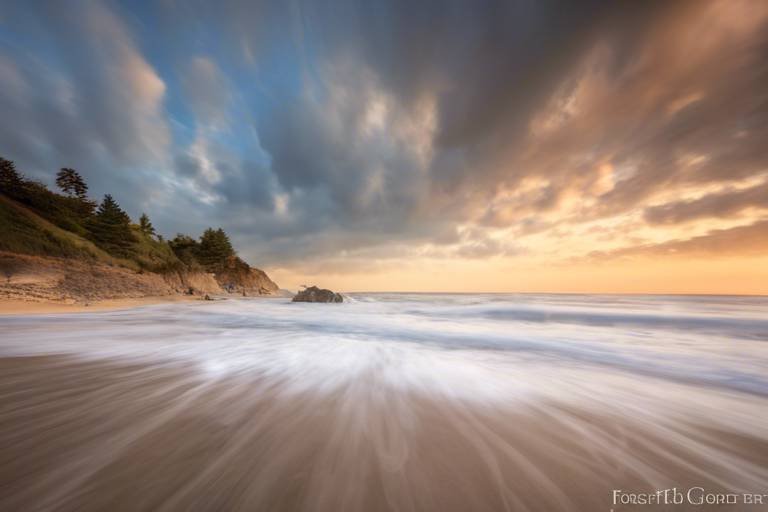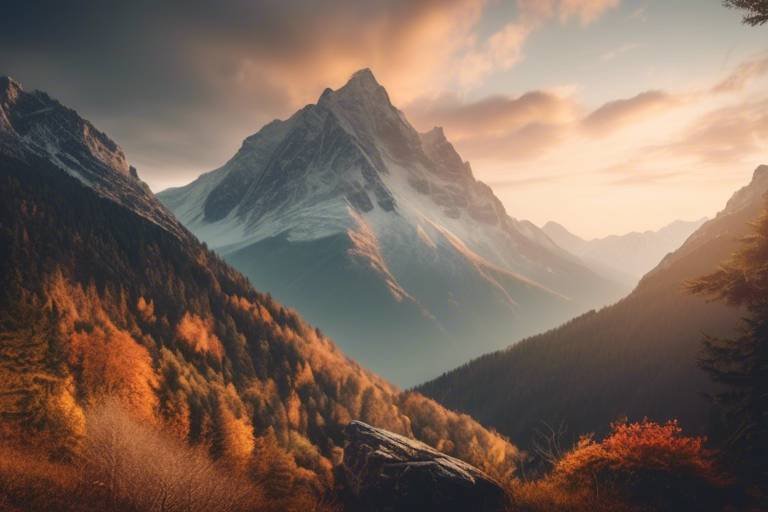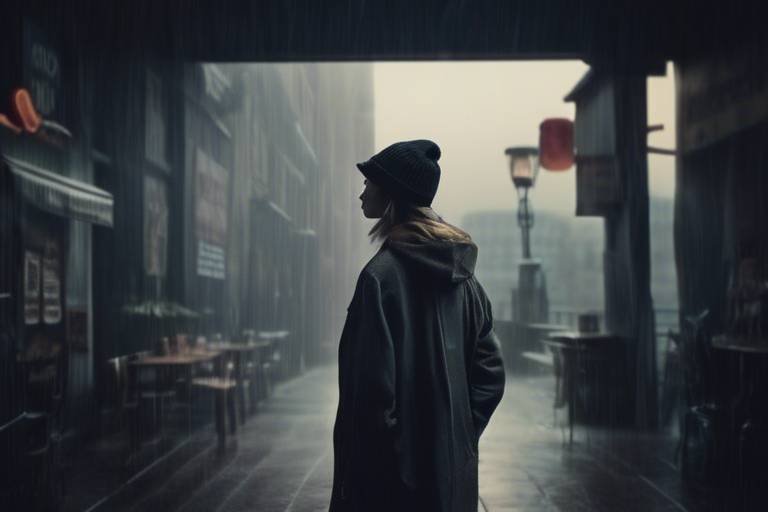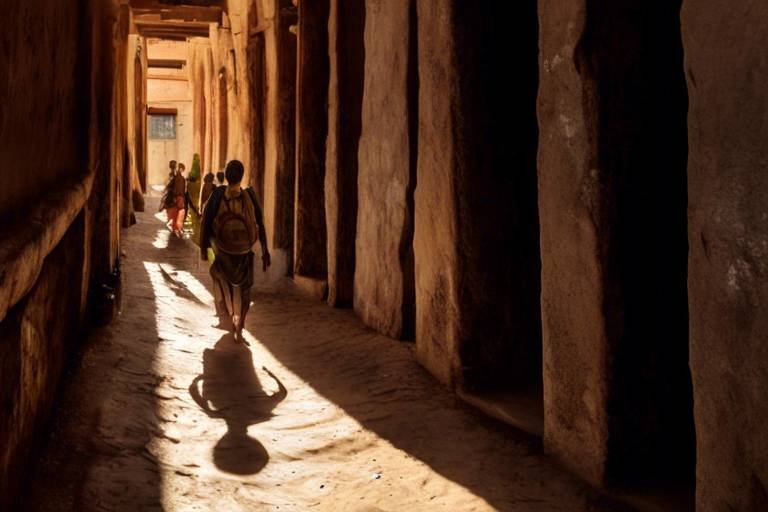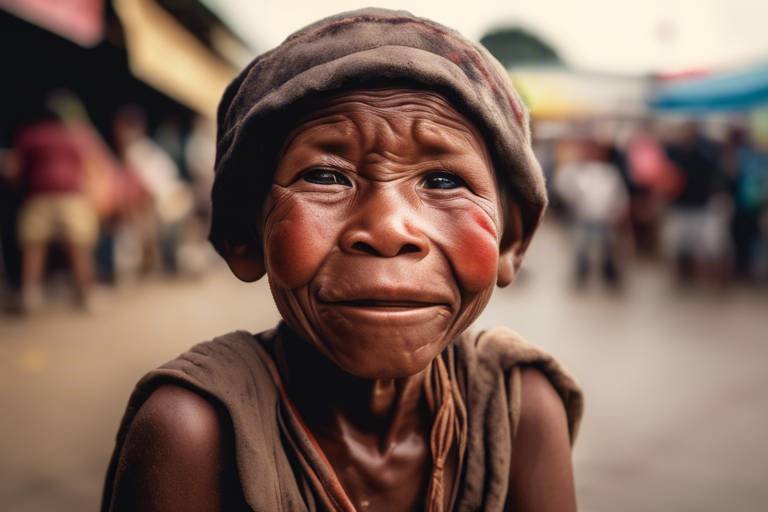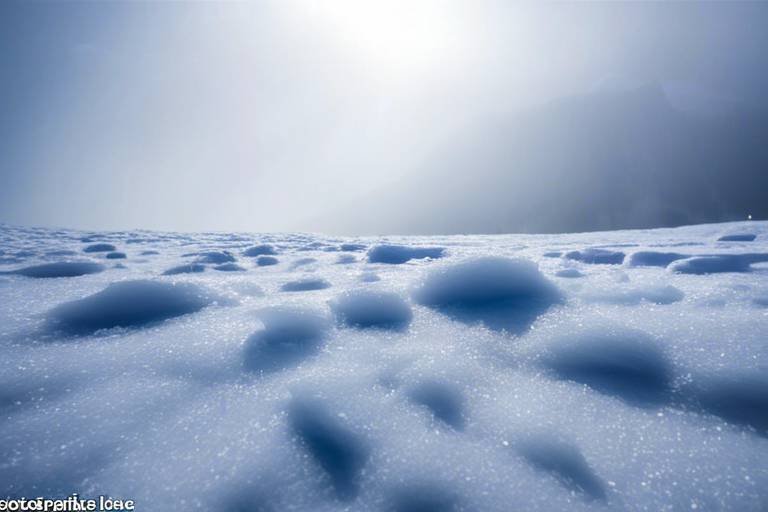How to Use Contrast to Create Striking Travel Photos
When it comes to creating striking travel photos, one of the most powerful tools in a photographer's arsenal is contrast. Contrast is what adds depth, drama, and visual interest to an image, making it stand out and grab the viewer's attention. By understanding how to use contrast effectively, you can elevate your travel photography to a whole new level.
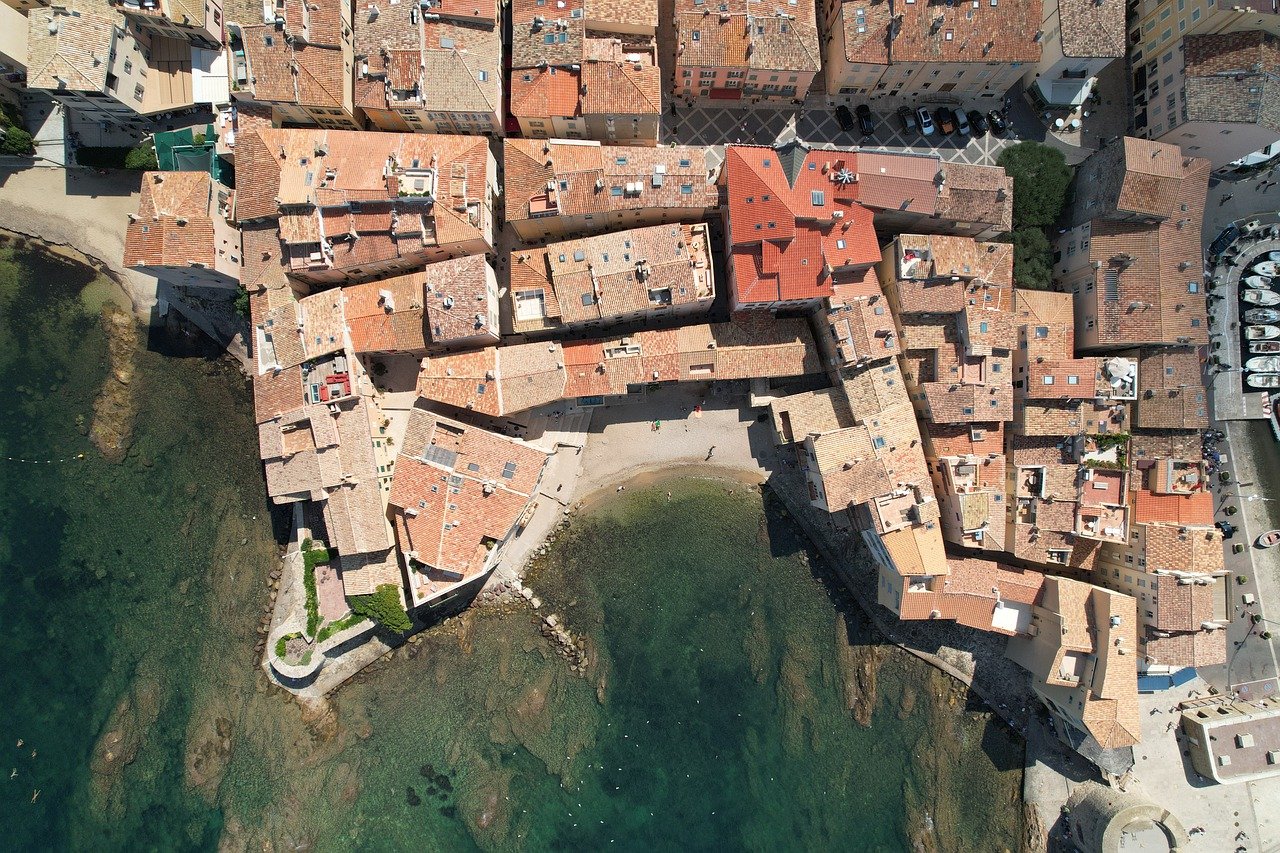
Understanding Contrast in Photography
Photography is an art form that allows us to capture moments, tell stories, and evoke emotions through images. One essential element that can take your travel photos to the next level is contrast. Understanding how to use contrast effectively can help you create visually striking and impactful images that stand out from the crowd.
Contrast in photography refers to the difference between the lightest and darkest parts of an image. It is the interplay between elements such as light and shadow, colors, textures, scale, subject matter, and emotions that create visual interest and impact in a photograph.
Imagine a scene where a brightly lit subject stands out against a dark, shadowy background. This stark difference in brightness creates a sense of drama and depth, drawing the viewer's eye to the focal point of the image.
Contrast is not just about black and white; it can also be seen in the vibrant colors of a sunset, the rough texture of a rocky landscape against the smoothness of a lake, or the juxtaposition of a tiny figure against a vast, expansive landscape.
By understanding how to manipulate and enhance contrast in your travel photos, you can create images that are not only visually appealing but also emotionally engaging. Experimenting with different forms of contrast can help you convey the mood and atmosphere of a place, telling a compelling story through your photography.
Next, let's delve deeper into the various aspects of contrast in photography and how you can use them to create stunning travel photos that leave a lasting impression on viewers.
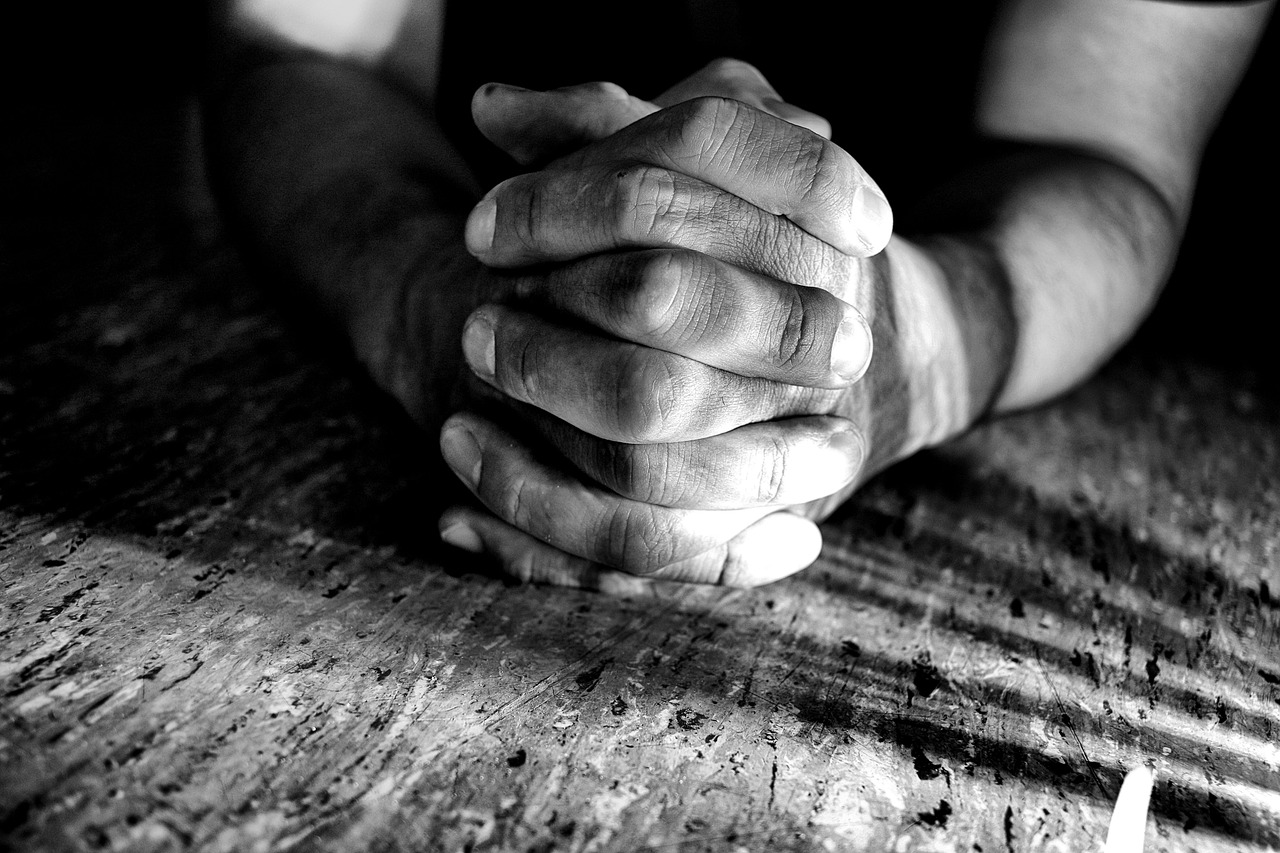
Contrast in Light and Shadow
When it comes to capturing captivating travel photos, understanding how to utilize contrast effectively can make all the difference. Contrast is a powerful tool that can elevate your images, making them visually striking and memorable. In this article, we will delve into various aspects of contrast in photography and how you can leverage it to create stunning travel photos that stand out from the crowd.
Light and shadow play a crucial role in photography, especially when it comes to creating contrast. The interplay between light and shadow can add depth and drama to your travel photos, enhancing the overall composition. By strategically positioning your subject in relation to light sources, you can create dynamic contrasts that draw the viewer's eye and create a sense of intrigue. Shadows can also be used to frame your subject or add a sense of mystery to the scene, further enhancing the contrast in your images.
Imagine a bustling market scene where sunlight filters through the canopy, casting dramatic shadows on the colorful produce. By capturing the vibrant colors against the deep shadows, you can create a visually compelling image that tells a story of light and darkness, adding a layer of complexity to your travel photography.
Experimenting with different lighting conditions, such as harsh midday sun or soft golden hour light, can also help you explore the nuances of contrast in your photos. Whether you are shooting a majestic landscape or a bustling city street, paying attention to the contrast between light and shadow can transform an ordinary scene into a captivating visual narrative.
- How can I enhance contrast in my travel photos?
- Why is contrast important in photography?
- How can I use contrast to evoke emotions in my travel photos?
To enhance contrast in your travel photos, you can adjust the levels and curves in post-processing software to make the highlights brighter and shadows darker. You can also use tools like dodge and burn to selectively lighten or darken areas of the image, emphasizing the contrast.
Contrast helps create visual interest and impact in photos by highlighting differences between elements such as light and shadow, colors, textures, and subjects. It adds depth, drama, and dimension to images, making them more dynamic and engaging to viewers.
By manipulating contrast in your photos, you can evoke different emotions and moods. High contrast images with stark differences can convey intensity and drama, while low contrast images with subtle tonal variations can evoke a sense of tranquility and calmness.

Contrast in Colors
Colors play a crucial role in travel photography, as they can instantly grab the viewer's attention and evoke various emotions. When it comes to creating striking travel photos, understanding how to use color contrast effectively is essential. By juxtaposing contrasting colors in your composition, you can make your subjects pop and create vibrant, eye-catching images that draw viewers in.
One way to utilize color contrast is by incorporating complementary colors, which are opposite each other on the color wheel. For example, pairing blue with orange or red with green can create a visually dynamic image that immediately captures the viewer's gaze. This technique not only adds visual interest but also enhances the overall impact of your travel photos.
Additionally, playing with saturation levels can also help enhance color contrast in your images. By boosting the saturation of certain colors while desaturating others, you can create a more dramatic and compelling visual narrative. This technique can be particularly effective in landscape photography, where vibrant colors can bring a scene to life and convey a sense of depth and dimension.
Furthermore, considering the emotional impact of colors is crucial when using color contrast in travel photography. Warm colors like reds, oranges, and yellows can evoke feelings of energy and passion, while cool colors like blues and greens are often associated with calmness and tranquility. By strategically incorporating these color schemes into your compositions, you can convey specific moods and emotions that resonate with viewers on a deeper level.
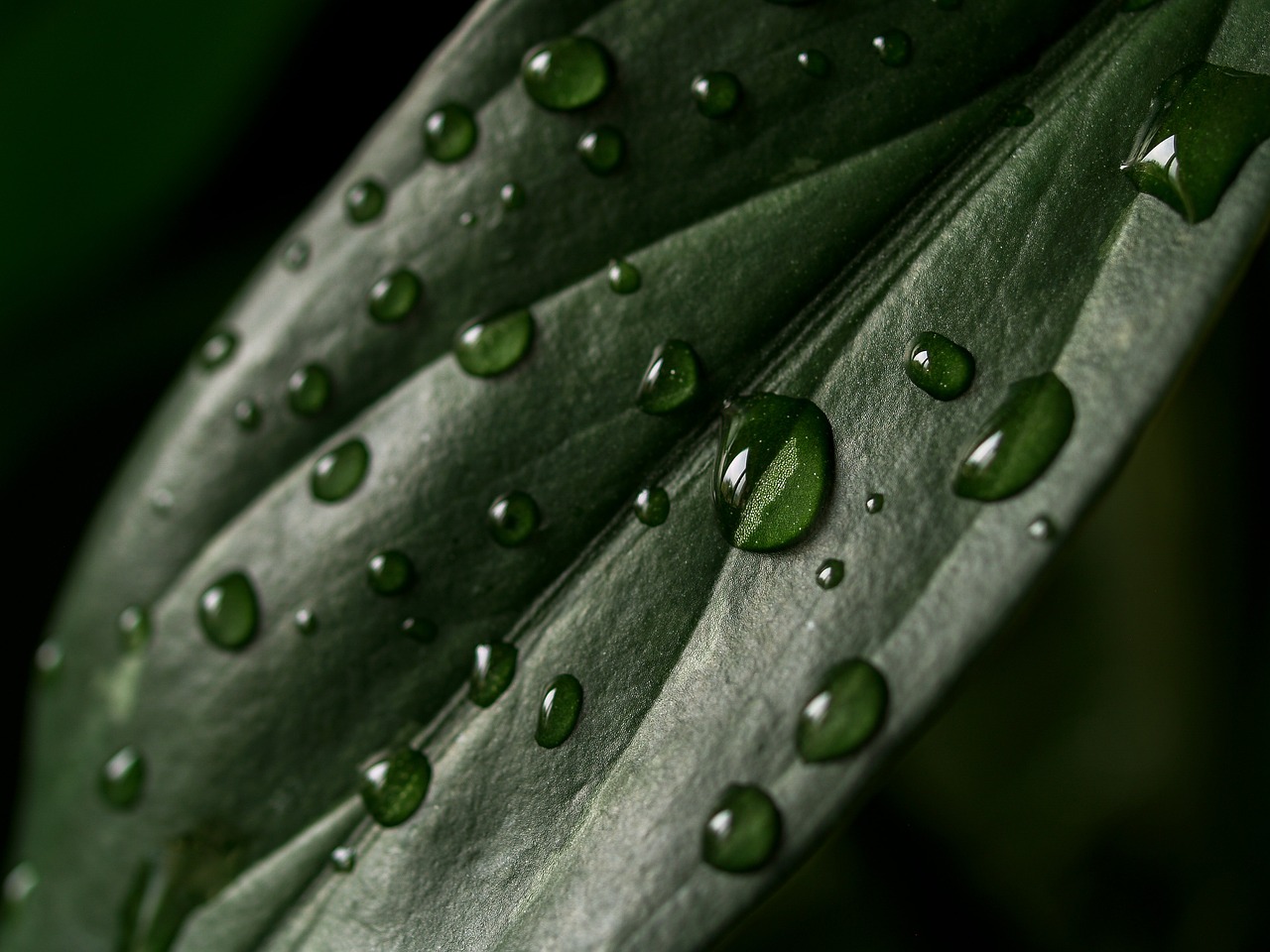
Contrast in Textures
When it comes to capturing captivating travel photos, the use of contrast in textures plays a vital role in creating visually appealing images. Textures can add depth, interest, and a tactile element to photographs, engaging viewers and inviting them to immerse themselves in the scene.
Imagine a photo of a rugged, weathered stone wall juxtaposed against a smooth, flowing waterfall. The contrast in textures between the rough, uneven surface of the wall and the silky, cascading water creates a striking visual impact, drawing the viewer's eye and evoking a sense of touch through the image.
Incorporating a variety of textures within a single frame can enhance the overall composition of a travel photo. For example, capturing the soft, fluffy clouds in the sky against the hard, jagged peaks of a mountain range creates a juxtaposition that adds interest and visual appeal to the photograph.
Textures can also play a crucial role in conveying the atmosphere and mood of a travel destination. The rough, gritty texture of a bustling city street can evoke a sense of urban energy and vibrancy, while the soft, velvety texture of a flower petal can evoke feelings of tranquility and serenity.
When editing travel photos to enhance texture contrast, focusing on clarity and sharpness can help bring out the intricate details of different textures. Adjusting highlights and shadows can further emphasize the contrast between textures, creating a more dynamic and visually engaging image.
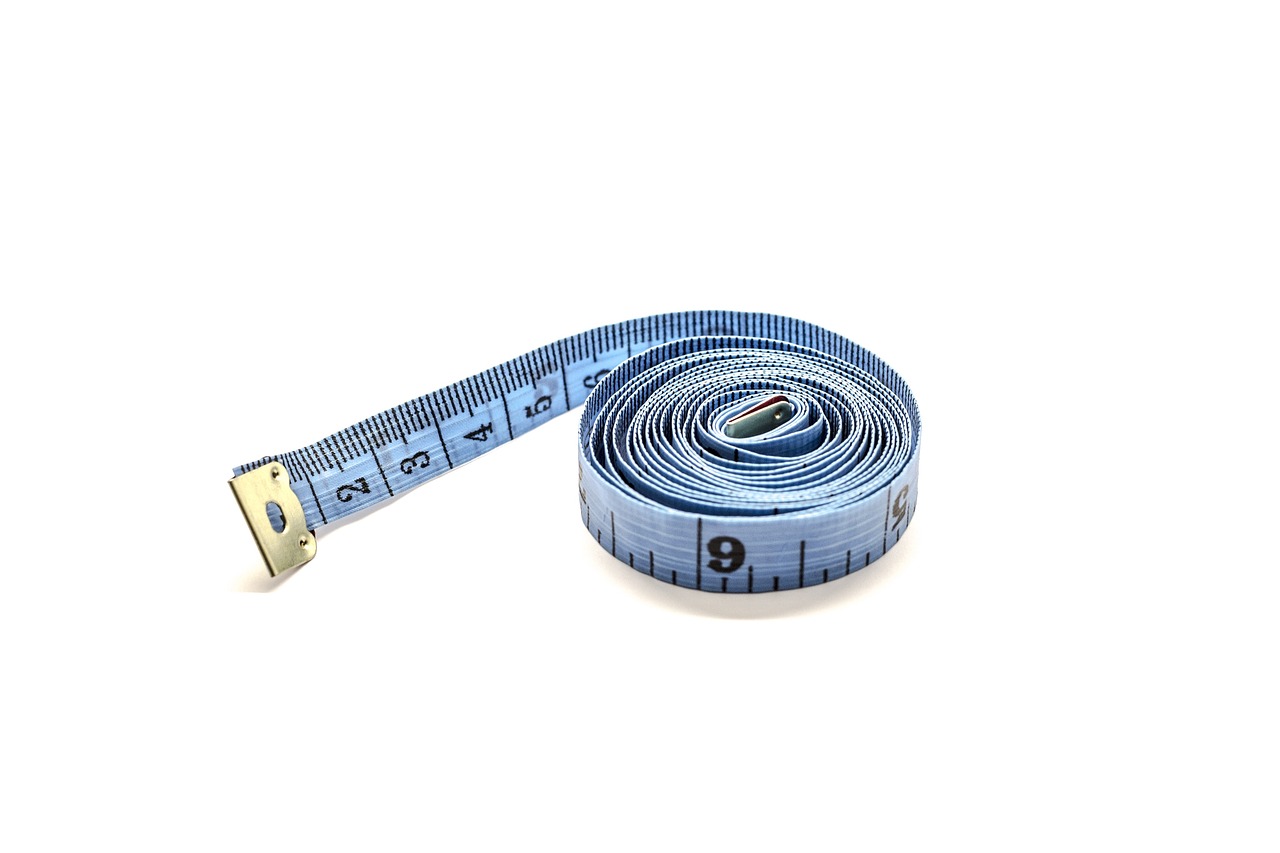
Contrast in Scale and Size
When it comes to creating striking travel photos, one essential element to consider is the contrast in scale and size. By playing with the relative sizes of elements within your frame, you can create dynamic compositions that immediately capture the viewer's attention. Imagine a towering mountain peak juxtaposed against a tiny figure of a hiker, or a vast desert landscape with a solitary camel trekking across the sand. These contrasting scales not only add visual interest but also convey a sense of grandeur and awe, drawing the viewer into the scene.

Contrast in Subject Matter
When it comes to creating captivating travel photos, one essential element to consider is the contrast in subject matter. By juxtaposing different subjects within the frame, you can add layers of interest and intrigue to your images. Imagine a bustling marketplace where the vibrant colors of fresh produce contrast with the weathered faces of the vendors. This contrast not only creates a visually appealing composition but also tells a story of the coexistence of tradition and modernity in that cultural setting.
Similarly, contrasting subjects can evoke a sense of harmony or tension in your travel photos. For instance, capturing a solitary figure against a vast, bustling cityscape can highlight the contrast between the individual and the urban environment, conveying a feeling of isolation or resilience. By carefully selecting and positioning contrasting subjects in your frame, you can create visual narratives that engage viewers and spark their imagination.
Moreover, contrast in subject matter allows you to highlight the diversity and complexity of the world around you. Whether it's contrasting architectural styles in a cityscape or juxtaposing natural elements in a landscape, these contrasts can emphasize the beauty of differences and similarities within a single frame. Through thoughtful composition and framing, you can create images that not only showcase the uniqueness of each subject but also celebrate the harmonious interplay between them.

Contrast in Mood and Emotions
When it comes to capturing mood and emotions in travel photos, contrast plays a pivotal role in setting the tone and evoking specific feelings in the viewer. By skillfully using contrast, photographers can create images that range from tranquil and serene to dynamic and intense, each conveying a unique emotional impact.
Imagine a photograph of a peaceful beach at sunset, where the soft, warm light contrasts with the cool, calming tones of the ocean. This juxtaposition of light and colors not only enhances the beauty of the scene but also elicits a sense of tranquility and relaxation in the viewer, inviting them to immerse themselves in the moment.
On the other hand, a photo of a bustling city street at night, with bright neon lights casting harsh shadows and vibrant colors contrasting against the dark night sky, can evoke a feeling of energy and excitement. The stark contrast between the bright, bustling urban environment and the quiet, dark night sets the stage for a dynamic and intense visual experience.
Furthermore, contrast in mood and emotions can also be achieved through the juxtaposition of different elements within a frame. For example, a photo of a solitary figure standing against a vast, empty landscape creates a sense of isolation and contemplation, highlighting the contrast between the individual and their surroundings.
By playing with light, colors, composition, and subject matter, photographers can effectively use contrast to convey a wide range of emotions in their travel photos, allowing viewers to connect with the image on a deeper, more emotional level.
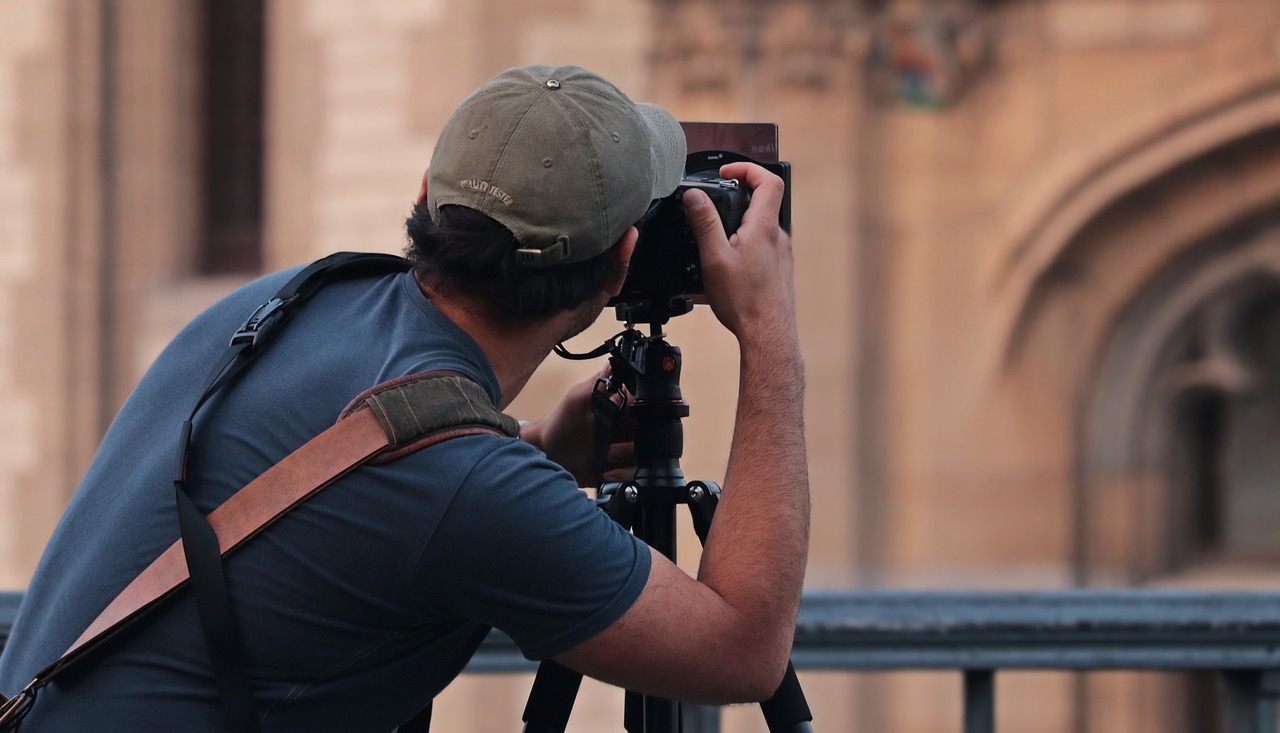
Editing Techniques for Enhancing Contrast
When it comes to enhancing contrast in travel photos, mastering editing techniques is crucial. By utilizing various post-processing tools, photographers can elevate the visual impact of their images and create stunning compositions that captivate viewers. One of the key techniques for enhancing contrast is adjusting levels and curves. This allows photographers to fine-tune the brightness and darkness levels in different parts of the image, bringing out details and enhancing the overall contrast.
Another effective editing technique for enhancing contrast is the use of dodge and burn tools. These tools enable photographers to selectively lighten (dodge) or darken (burn) specific areas of the image, enhancing the contrast between light and dark elements. By strategically applying dodge and burn, photographers can create more depth and drama in their travel photos, making them more visually striking and engaging.
Additionally, utilizing color adjustments can also play a significant role in enhancing contrast. By adjusting the saturation and hue of different colors in the image, photographers can create more vibrant and dynamic contrasts that make the subjects pop. This technique is particularly useful when aiming to create eye-catching travel photos that stand out and draw viewers in.
Experimenting with different editing techniques and tools is key to finding the right balance of contrast in travel photos. Whether it's adjusting levels and curves, using dodge and burn tools, or playing with color adjustments, each technique offers a unique way to enhance contrast and create visually impactful images that tell compelling travel stories.
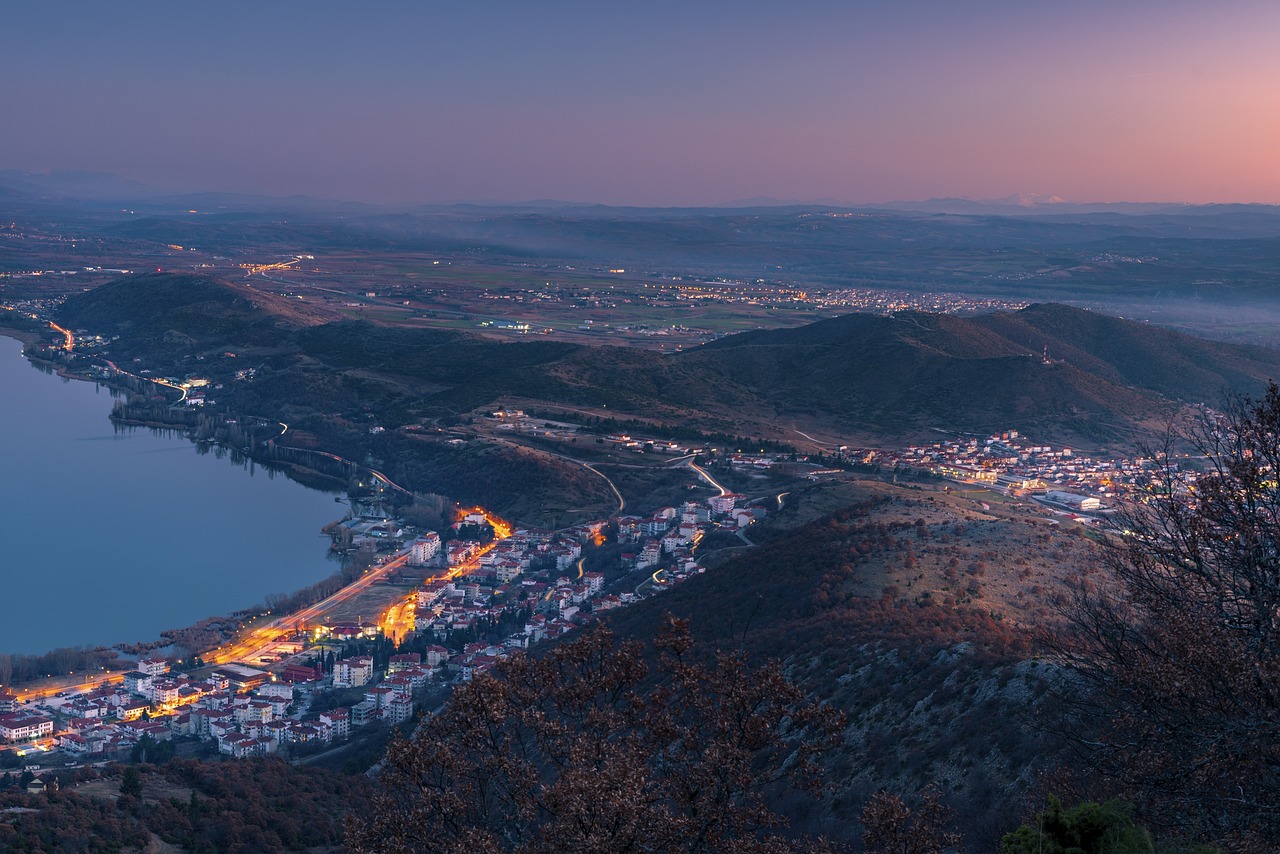
Creating Impactful Travel Stories Through Contrast
Creating impactful travel stories through contrast is a powerful way to engage viewers and transport them to different worlds through your photographs. By skillfully using contrast in various elements of your images, you can weave a narrative that captivates and resonates with your audience.
Imagine a photo where a bustling cityscape is juxtaposed against a serene mountain backdrop, highlighting the contrast between urban chaos and natural tranquility. This stark difference in surroundings not only creates visual interest but also conveys a story of the coexistence of two contrasting worlds in harmony.
Similarly, playing with contrasts in mood and emotions can evoke a range of feelings in your travel photos. By juxtaposing a peaceful sunset scene with a bustling market full of vibrant colors and energy, you can create a narrative that captures the essence of a place - its peaceful moments intertwined with its lively spirit.
Editing techniques play a crucial role in enhancing contrast to bring out the storytelling elements in your travel photos. Adjusting levels and curves can help emphasize the differences between light and dark areas, enhancing the overall impact of the image. Using tools like dodge and burn allows you to selectively enhance contrast in specific areas, guiding the viewer's gaze and emphasizing key elements of your story.
Ultimately, creating impactful travel stories through contrast is about more than just taking visually striking photos. It's about immersing your audience in a narrative that goes beyond the surface, inviting them to explore the depths of a place through your unique perspective and storytelling prowess.
Frequently Asked Questions
- What is contrast in photography?
Contrast in photography refers to the difference between light and dark areas in an image. It helps create visual interest, depth, and impact in photos by highlighting differences in tones, colors, textures, and subjects.
- How can I use contrast to improve my travel photos?
To enhance your travel photos using contrast, you can play with light and shadow, colors, textures, scale, subjects, and emotions. Experiment with different elements to create dynamic and engaging compositions that tell compelling stories.
- What role does contrast play in post-processing?
Post-processing techniques like adjusting levels, curves, and using tools such as dodge and burn can help enhance contrast in travel photos. These techniques allow you to fine-tune the tones and highlights in your images to make them more visually striking.
- How can contrast evoke different moods in travel photography?
Contrast can be used to evoke a range of emotions in travel photos. By manipulating light, colors, and composition, you can create images that convey a sense of serenity, excitement, mystery, or drama, depending on the mood you want to portray.
- Why is contrast important in storytelling through photography?
Contrast helps to add depth and complexity to travel stories captured through photography. By using contrasting elements effectively, you can create images that resonate with viewers, drawing them into the narrative and leaving a lasting impression.




